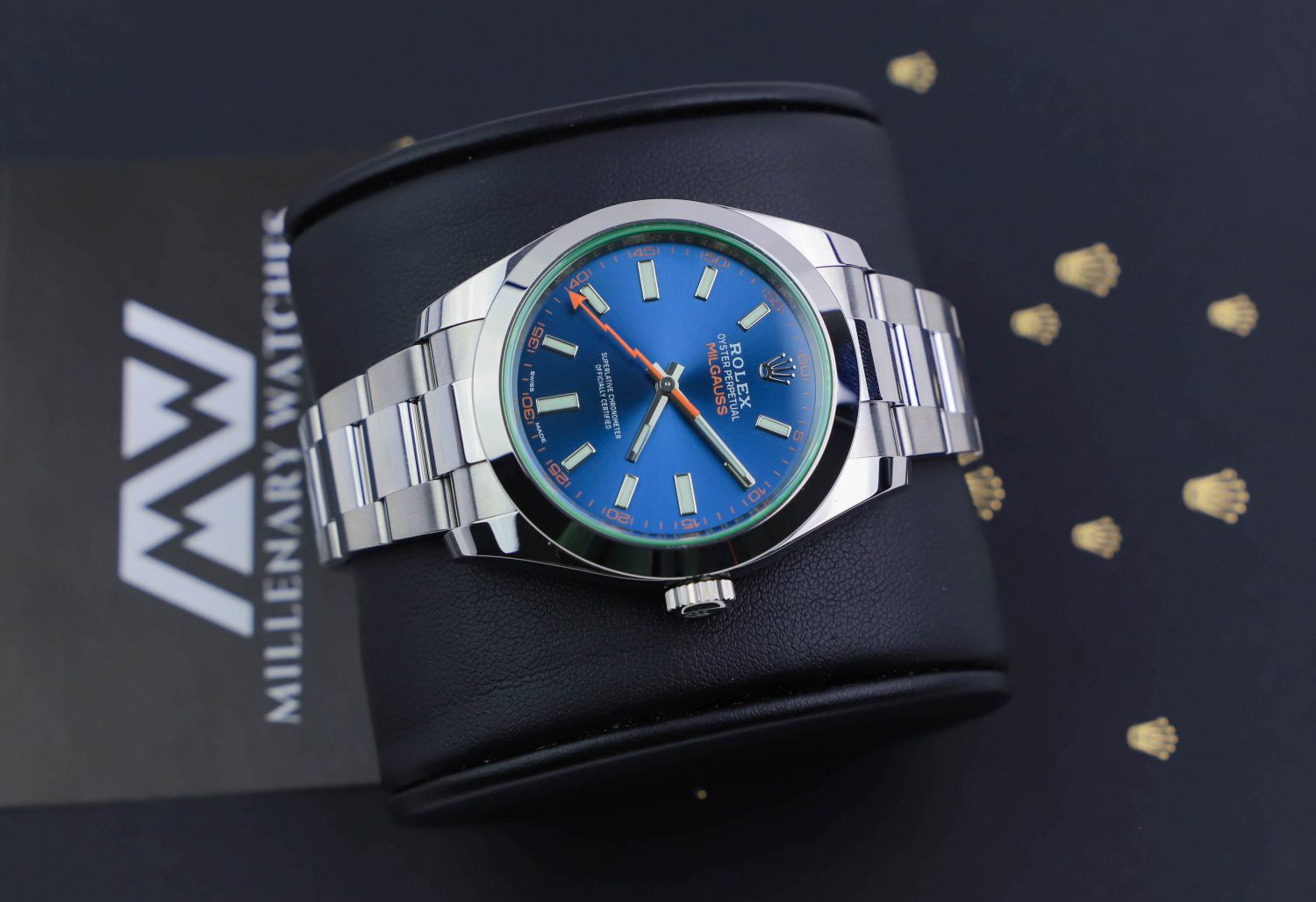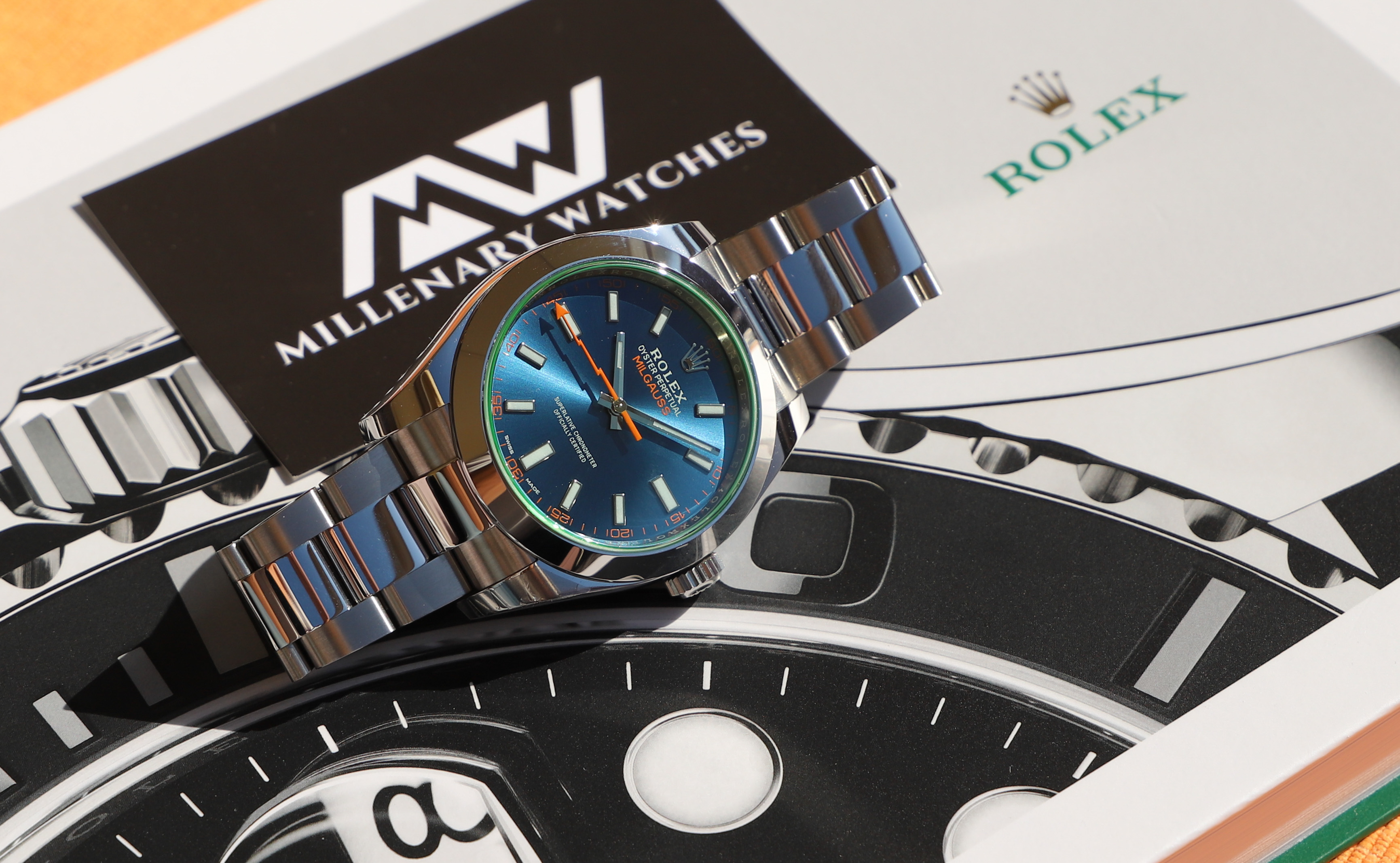
Rolex Milgauss Green Crystal Complete Guide
Green sapphire crystals are not something that you see every day on a Rolex watch. Unless you own one that is.
But it is an iconic trait of the Milgauss watches that incorporate this unique and special glass.
The green crystal of the Milgauss is unarguably one of the things that stand out the most. It’s a bold and unique detail that you perhaps wouldn’t expect from the otherwise traditional and conservative Rolex brand.
In Rolex’s own terms:
“A green sapphire crystal – with a twist of lime – produces light reflections while preserving optimal legibility. Yet another Rolex first.”
Let’s look closer at the Rolex Milgauss green crystal and what it is all about.
Rolex Milgauss green crystal
Let’s start with the question that is most commonly asked about the green crystal of the Milgauss: what is the purpose of the green crystal?
The answer is simple, it’s purely aesthetical.
The crystal has a very slight green tint which gives the dial a particular look to it in terms of color. If you look at the watch, you may not even notice that the crystal is tinted. The way you notice it is by looking at the edge of the crystal.
The first time Rolex used a green crystal for the Milgauss was in 2007. Back then, non-tinted versions and tinted versions were part of the Milgauss collection simultaneously, but today, the green crystal is a characteristic trait of the line.
How is the green Milgauss crystal made?
Like most of Rolex’s production, only Rolex knows exactly how it is made. What is certain is that Rolex does not only use a green layer for the crystal but makes the entire crystal tinted green. This ensures that the color will never fade or discolor.
Rolex has stated that developing the green sapphire crystal took them several years. Furthermore, they state that the process of manufacturing the green crystal takes several weeks. Some may be skeptical about this, but when making synthetic sapphire, the material has to “grow”, and this process takes several weeks, and cannot be sped up.
But as in a lot of manufacturing, bear in mind that they don’t just manufacture one at a time – more so hundreds or even thousands simultaneously, which means that it could very well be true that it takes several weeks.
An interesting detail about the green crystal is that Rolex states that it is not patented because it is so difficult to make that no one would even try. Bold statement? Certainly!
Like all of Rolex’s sapphire crystals, the green crystal is made of synthetic sapphire. The ways in which you can synthetically make sapphire are many. The most common are:
- Verneuil flame-fusion
- Hydrothermal method
- Bridgman-Stockbarge
- Czochralski
It is believed that Rolex uses the hydrothermal method for the production of its crystals. During the process, copper and aluminum oxide are used. Copper is the element that gives the crystal its green tint.
Conclusion
The green crystal is a signature trait of the Milgauss, found exclusively in the model. The green tint of the crystal is not for everyone, but it is also a trait that makes some people choose this watch.
The chemical formula for the Synthetic Green Sapphire is Co3+ – Al2O3. This is a combination of copper and Aluminium Oxide.
Having a Milgauss with a green crystal is something completely unique, not to be found on any other previous Rolex watch. It’s simply something truly special.








My absolute favorite Rolex out of all their offerings and within my collection. Uncommon, striking appearance and yet manages to retain the conservative austere Rolex design. I hope the upcoming redesign retains the overall look and feel of the original.